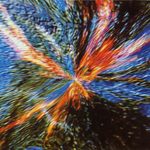Richard Wright
Most Recent Affiliation:
- City of London Polytechnic and London Guildhall University
Location:
- London, England, United Kingdom
Writings and Presentations:
-
Title:
Computer Graphics as Allegorical Knowledge: Electronic Imagery in the Sciences
Writing Type: Paper
Author(s):
Exhibition: SIGGRAPH 1990: Digital Image-Digital Cinema
Abstract Summary:This informal paper studies the effects of the recent introduction of computer-generated imagery on the practice of science and its function in understanding the world. It intends to introduce the subject of computerized visualization for scientific purposes into a wider debate, to show the diversity of issues involved-scientific, cultural and philosophical-and to build a context in which they can be critiqued. The author seeks to show the variety of scientific imaging and its influences on scientific knowledge; as both experiments and results are increasingly expressed in terms of imagery, the image assumes an integrity of its own and the object to which it refers becomes obscured. This leads to a shift of focus away from abstract theory as the embodiment of knowledge to the ascension of an allegorical image-based science with computer graphics as its natural language.
[Download PDF]
Title: The Image in Art and 'Computer Art'
Writing Type: Paper
Author(s):
Exhibition: SIGGRAPH 1989: Art Show
Abstract Summary:In this essay the author takes a cursory look at the increasing range of applications of computers to art and design practice and questions some of the assumptions that have been made about their use. The proliferation of computer imagery in society as part of the video culture and its effects on our attitudes towards digital representation are emphasised. This leads to a redefinition of the intimacy of the relationship between artist and art object. Such issues contribute to the comparative study of digital media and physical/mechanical media and the computer’s impact on the creation and apprehension of imagery.
[Download PDF]
Title: Soft Future
Writing Type: Essay
Author(s):
Exhibition: SIGGRAPH 1993: Machine Culture
Abstract Summary:Will you see a technological utopia, a city of gleaming metal spires orbiting spacecraft, a world spared from nuclear annihilation and united by a common belief in the benefits of rational progress? Nowadays, probably not. At most your vision is likely to be an end to recession, economic stability for at least a while, a new order of gray-suited bureaucracy. Perhaps you see nothing at all, just a hazy mist of half-forgotten ideals. But when I close my own eyes there is still something there lurking in the background, like a memory chopped up into disparate fragments. It coagulates, forming an surface-it is the surface of a computer screen.
[Download PDF]
Title: Superanimism: The practice of formalised imagery
Writing Type: Paper
Author(s):
Exhibition: SIGGRAPH 1991: Art and Design Show
Abstract Summary:This essay discusses the dichotomy between visual, animated images and the abstract computer program that generates them. This digital and numerical base adds an extra dimension to the animation, whereby the creative experience is divided into a number of different levels.
Digital images are informed by the status of their algorithmic source, creating in the viewer a kind of numerical perception, thereby introducing scientific knowledge into our understanding of the visual. But because of the computer’s formalism and arbitrariness, the relation between algorithmic source and the electronic visual effect is not stable. Imagery is of a different experiential type to logical structures, and this causes their disjuncture or alienation, although they are logically and deterministically connected. Thus synthetic images do not appear “human” or manmade but objective or “natural,” like photographs.
The underlying algorithm is so contingent that in terms of being an accessible entity it hardly exists at all without reference to its sensory manifestations. The actual substance of the animate is diffused into so many different levels at once, it loses its ontological identity. These effects lead to a description of a computer animation as an object able to vitalize both tangible and intangible spaces and become a super-animate.
[Download PDF]
Role(s):





